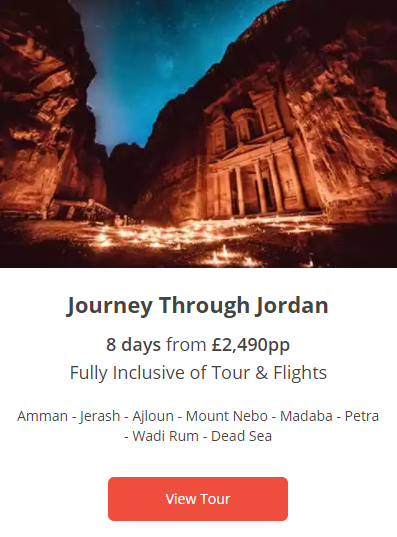Few places on earth compare with the rugged and dramatic beauty of Wadi Rum, Jordan’s ‘Desert of the Moon’. Lying 30 miles east of Aqaba, Jordan’s only coastal city, this otherworldly, Mars-like desert encompasses an area almost the size of New York City, and has been inhabited since at least the early Stone Age.
Despite its extensive history, Wadi Rum was first flung into the modern ‘worldwide stage’ by the 1962 film Lawrence of Arabia. The film sees Peter O’Toole in the role of British liaison officer T.E. Lawrence, who worked together with the Hashemite Army during the 1916-18 Arab Revolt against the Ottoman Empire, which at that time controlled much of the Middle East.
Although the film was wildly historically inaccurate, to the West, it was also a geographic eye-opener. Wadi Rum’s reddish-gold sands, ancient ravines and towering sandstone cliffs inspired the imagination of viewers across the world. Nonetheless, relatively few people have been privileged enough to travel here in person.


For those who do journey to Jordan, few ever forget the exhilaration of zipping across Wadi Rum in a 4×4 with a Bedouin guide at the wheel. One moment, a vast sea of rose-gold dunes sprawl in every direction; the next, the sands give way to rocky bluffs and spiny foliage, and lofty rock formations towering against the horizon. The most iconic among them are the Seven Pillars of Wisdom – originally called Jabal Al-Mazmar, they were renamed after Lawrence’s autobiography of the same name. These rough, coarse columns of sandstone and granite erupt dramatically from the sand, like fingers grasping at the sky.


For many travellers, the most intriguing aspects of the wadi are its many siqs or canyons. One of the most famous is Khazali Siq, a tapered, hundred-metre gorge running dramatically through rocky cliffs. Its inner walls are emblazoned with ancient petroglyphs depicting people, camels, horses and footprints. Protected from the sand and wind for some two thousand years, these cryptic messages and waymarkers were left like signposts by the Thamūd, Nabateans and other nomads, who travelled through the Arabian desert in bygone millennia.
Most of the valley’s modern Bedouins are more rooted and less nomadic; the desert is not simply a trade route, but a home. While most visitors visit the Wadi on a day trip before rushing on to Petra, our recommendation is to stay here overnight and enjoy a taste of diyafa, the world-famous Bedouin hospitality, which is considered part of the Bedouin code of honour.


Our 8-day Journey through Jordan itinerary includes a night at Memories Aicha Luxury Camp. Here, we stay in authentic yet luxurious Bedouin tents, sheltered beneath the high walls of a rocky canyon, and lavishly decorated with thick fabrics and scattered embroidered cushions. There are several contemporary creature comforts at the camp, including modern bathrooms and an impressive dining room. Yet as the sun dips below the red horizon, countless stars fill the unpolluted skies, and the sweet warmth of Arabic tea lingers on your tongue, it’s hard not to feel somehow connected to the nomads of two thousand years ago.
Our Journey through Jordan tour (combinable with our Egypt and Israel itineraries) depart in spring and autumn 2021 & 2022. This is the best time of year to visit Jordan, when daytime temperatures are more comfortable. Discover more about the Middle East and the many wonderful tours to this fascinating region in our 2021-22 Central Asia & Middle East brochure.























